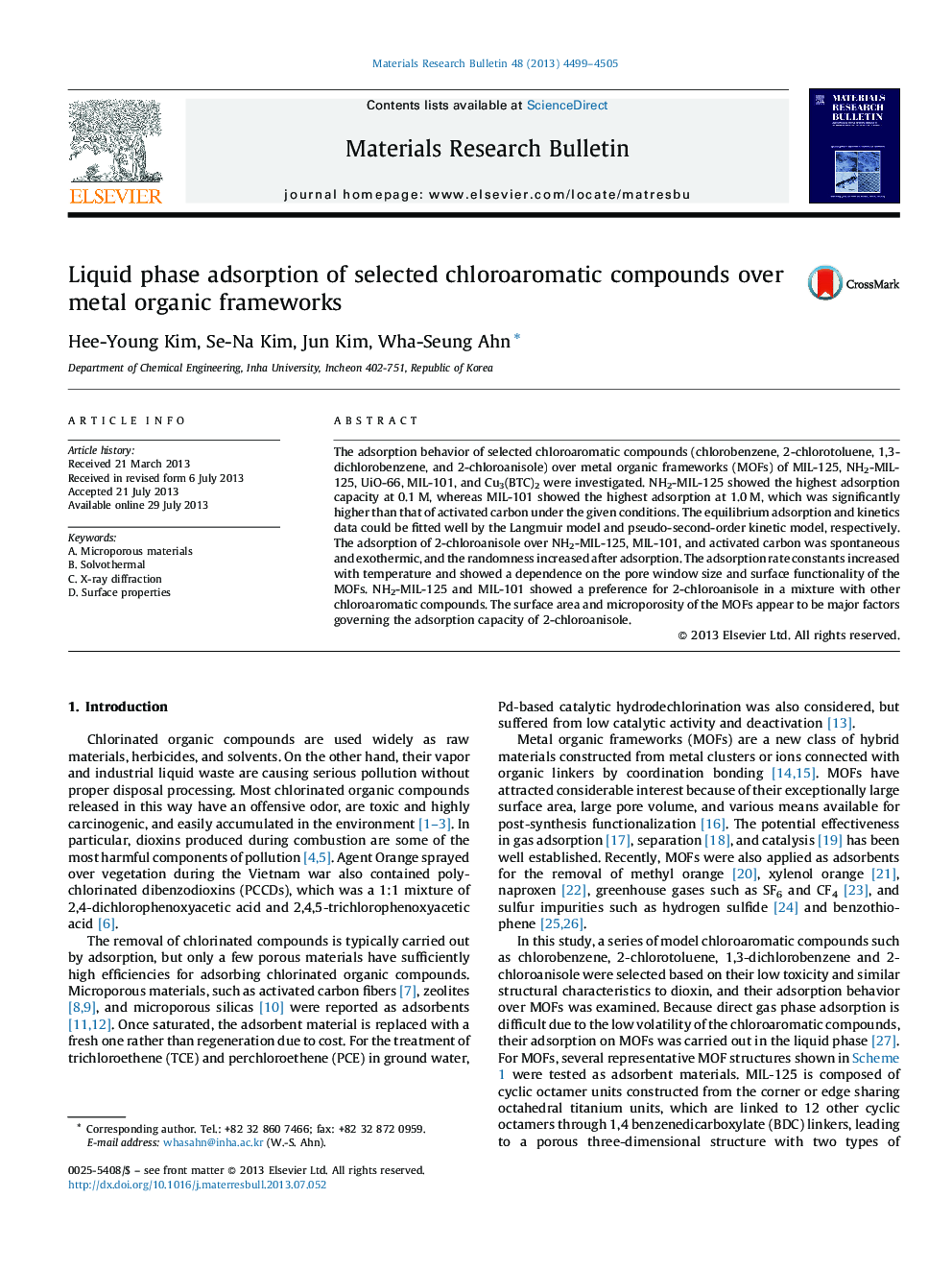| Article ID | Journal | Published Year | Pages | File Type |
|---|---|---|---|---|
| 1488921 | Materials Research Bulletin | 2013 | 7 Pages |
•Adsorption of chloroaromatic compounds over MOFs was investigated.•NH2-MIL-125 showed the highest adsorption capacity at low concentration.•MIL-101 showed the highest adsorption at high concentration.•Adsorption equilibrium and kinetics data were fitted by model equations.•Surface area and microporosity of the MOFs appear to be major factors.
The adsorption behavior of selected chloroaromatic compounds (chlorobenzene, 2-chlorotoluene, 1,3-dichlorobenzene, and 2-chloroanisole) over metal organic frameworks (MOFs) of MIL-125, NH2-MIL-125, UiO-66, MIL-101, and Cu3(BTC)2 were investigated. NH2-MIL-125 showed the highest adsorption capacity at 0.1 M, whereas MIL-101 showed the highest adsorption at 1.0 M, which was significantly higher than that of activated carbon under the given conditions. The equilibrium adsorption and kinetics data could be fitted well by the Langmuir model and pseudo-second-order kinetic model, respectively. The adsorption of 2-chloroanisole over NH2-MIL-125, MIL-101, and activated carbon was spontaneous and exothermic, and the randomness increased after adsorption. The adsorption rate constants increased with temperature and showed a dependence on the pore window size and surface functionality of the MOFs. NH2-MIL-125 and MIL-101 showed a preference for 2-chloroanisole in a mixture with other chloroaromatic compounds. The surface area and microporosity of the MOFs appear to be major factors governing the adsorption capacity of 2-chloroanisole.
Graphical abstractFigure optionsDownload full-size imageDownload as PowerPoint slide
